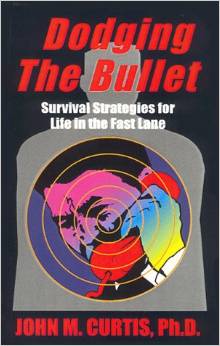Sending 36-year-old son-in-law Jared Kushner to Israel and the Palestinian territories, 71-year-old President Donald Trump hoped to re-start the peace process, something that’s eluded generations of U.S. presidents. When former Secretary of State John Kerry threw in the towel in April 28, 2014 after more than a year of talks, peace looked hopeless. Israeli Prime Minister Benjamin Netanyahu had little chemistry with former President Barack Obama, making peacemaking all the more difficult. Obama pressed Israel into making more concessions, especially ending settlement construction in the West Bank and East Jerusalem, both areas claimed by Palestinians for a future state. But Kerry’s peace talks failed primarily because Palestinians were split between Mahmoud Abbas’ West Bank and Ismail Haniyeh’s Gaza Strip, now controlled by Yahya Sinwar as of Feb. 28, 2017.
Controlled by Hamas, founded by quadraplegic Sheikh Ahmed Yassin in 1987, the Gaza Strip broke off from the Palestine Liberation Organization June 14, 2007, driving the Palestinian people into two separate halves. Obama pretended that he only had to negotiate a peace deal with Abbas in the West Bank, when, in fact, Hamas called the shots in West Bank as well. While pretending to be independent of Hamas, Abbas strung Kerry along for over a year, when there was zero possibility without Hamas signing on to forge a peace deal. Kushner met with Abbas in Ramallah, again knowing that without Hamas cooperation a peace deal isn’t possible. While meeting with Kushner, Abbas called on the world to condemn a recent Israeli attacks on knife-wielding youth in Jerusalem, gunned down after stabbing-to-death 23-year-old female Israeli soldier Hadas Malka in Jerusalem.
Whatever random acts of violence occur in Israel, the real problem Kushner faces in Mideast peacemaking is no different than Kerry faced four years ago. Nothing has changed between Gaza and the West Bank. Hamas still controls the Gaza Strip; marching to a different drummer since Haniyeh took over Hamas from 61-year-old Khalid Meshaal May 6. While living in Damascus and then Doha, Qatar, Meshaal showed no intent of compromising for an independent Palestinian state. While Abbas looked to compromise on the so-called Palestinian territories, Meshaal insisted on the right-of-return for Palestinians displaced during Israel’s 1948 war of independence from British rule. Since then, Palestinians, led by the late PLO founder Yasser Arafat, sought only the destruction of Israel. Hamas became Arafat’s militant wing to pressure Israel into making land-for-peace concessions.
Since the 1967 Six-Day-War, Palestinians claimed Israeli spoils as sovereign territory, despite the fact that before the 1967 War they held not one inch of sovereign land in Egypt’s Gaza Strip and Sinai Peninsula, Jordan’s West Bank and East Jerusalem or Syria’s Golan Heights. Only after the war did Palestinians claim Israel spoils as sovereign land, referring to Israeli construction as occupied territories. Abbas, while playing lip service to the peace process, encourages Palestinian youth to commit terrorist acts against Israeli civilians or police. With Abbas defending Palestinian youth shot by Israeli police, Kushner went to Malka’s home to sit shiva for the felled Israeli policewoman, a Jewish custom to support the family of the deceased. Kushner witnessed firsthand the deep-seated hatred Palestinians have for Israelis, willing to commit violence in the name of political resistance.
Regardless of the obstacles to peace, Kushner asked the Israelis and Palestinians to state their conditions for a Mideast peace. With Abbas cutting off electricity supplies to Gaza, there’s more desperation brewing for another war. When war broke out between Hamas and Israel July 8, 2014, it was because living conditions became intolerable. Getting only three hours of electricity in Gaza a day, the Gaza Strip once again reaches the boiling point. When the war ended August 26, 2014 much of Gaza was laid to waste, hoping to spur a large Gulf State donors’ conference. While pledging over $5 billion, Gaza only received a fraction of what was promised by Gulf State donors. Making war with Israel has been Hamas’ best fund-raiser, prompting pledges from rich gulf state donors. Hamas doesn’t think about the death and destruction to Gaza’s civilian population, only warring with Israel.
Kushner and the Trump administration find itself with a more friendly Israeli partners for a Mideast peace deal, now that Obama’s gone. But the same problems exist with Gaza’s Hamas divided from the West Bank’s PLO. Kushner saw firsthand that while Abbas talks about peacemaking, he’s on the same page as Hamas when it comes to making demands on Israel. Both Palestinians groups think Israel occupies Palestinian land not only in the West Bank and East Jerusalem but also in Israel proper where both groups want to guarantee the right of return to displaced Palestinians. Knowing it’s a non-starter, Kushner still, per Trump’s wishes, wanted Israelis and Palestinians to state what they wanted to begin bridging proposals. Since the 1967 War, Israel has returned the Sinai Peninsula [1979] and Gaza Strip [2005], expecting to swap land for peace, only getting more wars and terrorism.



